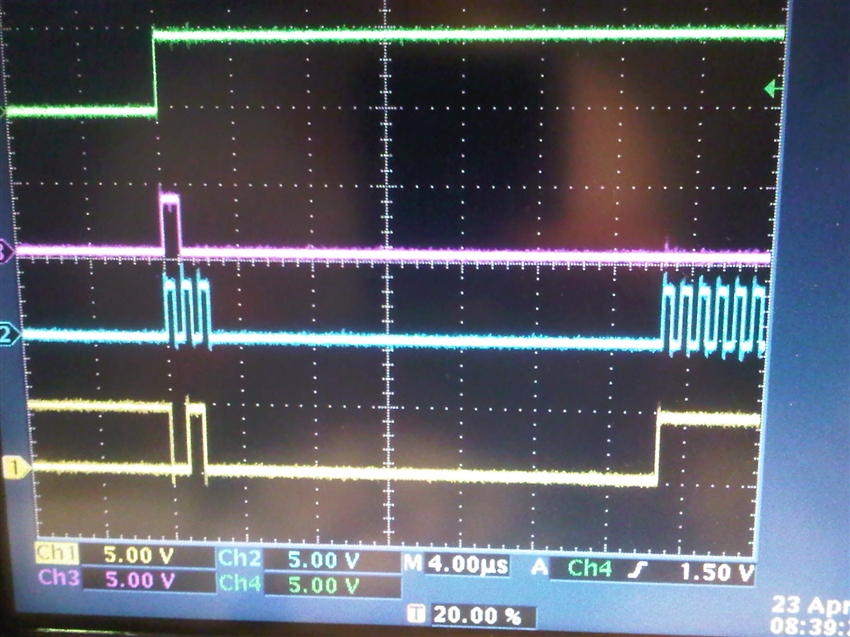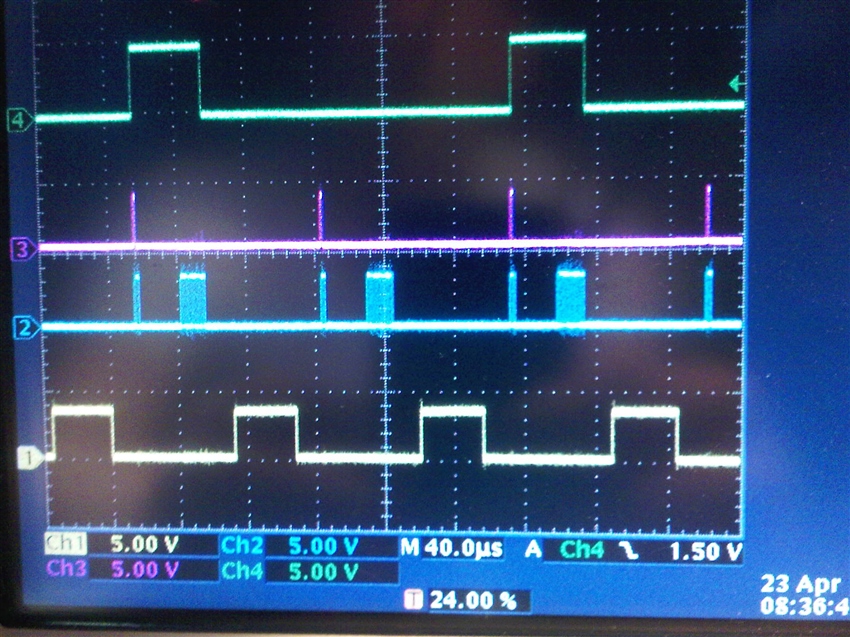Hi.
I come from Beijing and have an ADS8363EVM board. There are some problems about the busy time series. I configured the board as follows.
FCK=1MHZ;
VD was 5V;
VA was 5V;
RD connected CONVST;
CMA connected REF1; CMB connected REF2;
M0 was high; M1 was high; SDOB was high impedance;
The SDI data did not write to ADS8363EVM;
1\ SCK and CONVST time series(SCK was green line and CONVST was yellow line):

2\ RD and BUSY time series(RD was green line and BUSY was yellow line):

Could you explain what happened to the busy line?
Thank you very much!
Daisy




